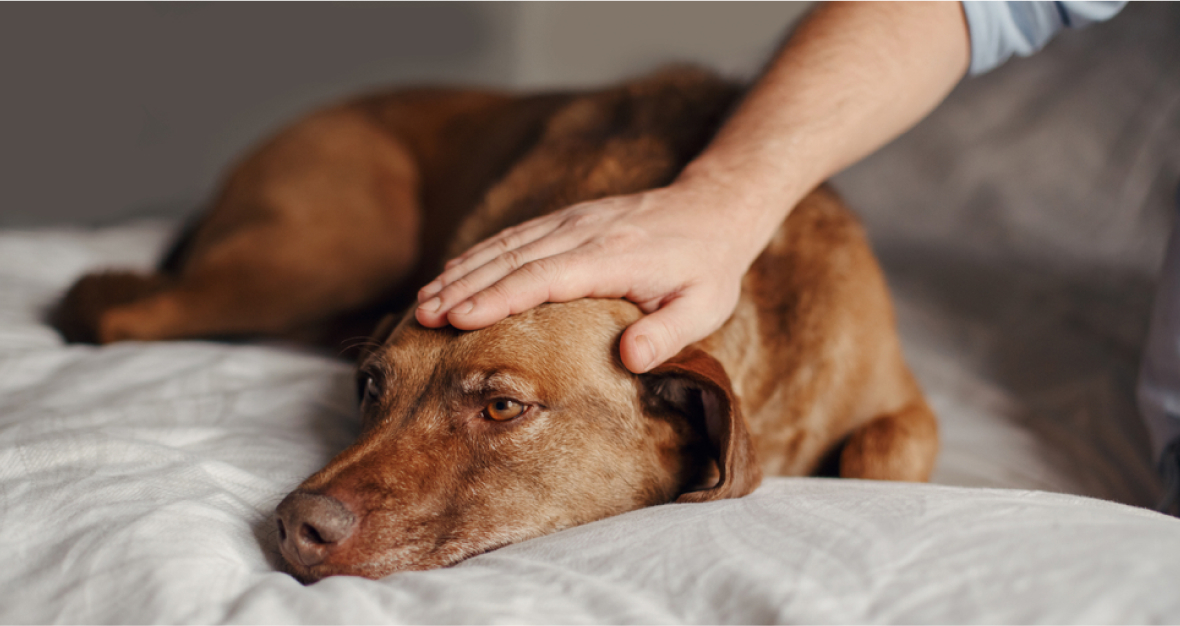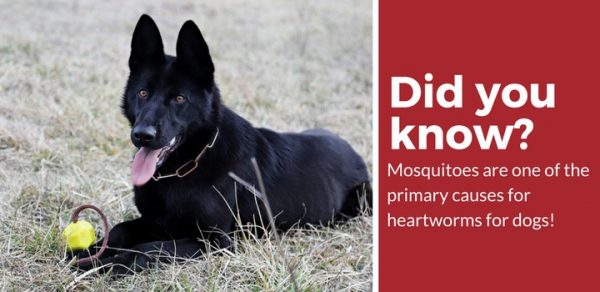Home » Pet Health » Pet Worms » Worms in Dog
Worms in Dog

Parasitic worms are common among dogs, and this is because most canines can easily pick up infections, bacteria, and viruses upon exploring their environment. Various microorganisms can be sitting in trash, dirt, and feces that your dog can get with a simple visit to the park.So it’s hard to determine which places are contaminated. Well, the best action for this would be prevention.
Most parasitic worms have a specific host species, but some can also transmit to humans. Therefore, learning the different types of canine parasites can help you determine, not only how you can treat your pet, but also to protect yourself and your loved ones.
The most common type of parasitic worms in dogs includes:
- Tapeworm
- Heartworm
- Lungworm
- Roundworm
- Hookworm
- Whipworm
- Mango worm
Parasitic worms require a host to survive. As a result, they take the derived nutrients that are supposed to strengthen the dog’s body. They also multiply rapidly, so an immediate response is important for intervention. In some cases, these contaminants can even be fatal, especially if the worms have infiltrated some of the organs.
There are different symptoms that you can watch out for to confirm the existence of parasitic worms in dogs. It is also worth noting that each type of worm shows different warning signs. For intestinal worms, these are the most common symptoms:
- Vomiting
- Potbelly
- Weight loss
- Abdominal pain
- Diarrhea
- Poor coat

Transmission
There are several possible ways that your dog can pick up these parasitic worms. It includes rolling on the ground, eating, and stepping on worm-contaminated soil.
There are also parasites living in other animals such as rodents, birds, and other reptiles, and worms can easily be transferred to dogs when they eat them. Aside from that, insects like fleas, ticks, and mosquitoes can also spread the infection.
In terms of puppies, they can get worms from drinking the contaminated milk of their mother. There are cases of parasitic worms that do not present any symptoms.
They will only appear when the dog is under too much stress, like the last stages of the female dog’s pregnancy. The worms can infect the fetuses in the womb. In worst cases, it can even lead to a severe illness and sudden death.
Observing the behavior of your dog and the complications they are exhibiting is one way to determine the type of worm in their body. However, it would be best to get them tested by a veterinarian as soon as possible because most of these worms are microscopic. They will also give you the necessary medication, follow-up checkups, and immediate actions to protect your dog’s health.
When Should My Dog Get Tested?
The two main types of parasitic worms are heartworms and intestinal worms. There are many available treatments for these two infections. However, it would be better not to wait for the symptoms to reveal themselves before testing your dog for these parasites.
Heartworm: All dogs need testing for heartworm infection at least once every year. It is important to get them a routine checkup and the necessary dosage of vaccine to ensure their immunity against parasitic worms.
If your pet happens to miss a day of checkup or vaccine, bring them to the clinic right away to get tested. After that, they would have to be tested again after six months. Heartworm infections can take up to six months to detect in dogs after they are infected. With the annual testing, every dog can prevent heartworm infections and live a healthier life.
Intestinal worms: For intestinal worms, it is necessary to get dogs tested every 6 to 12 months as a preventive measure. Conducting fecal examinations at least four times during the first year of a dog’s life is recommended because this is when they are most vulnerable.
ROUNDWORM
When it comes to the most common kind of parasitic worms, it would be the roundworms. They live in the dog’s intestines and consume some of the digested foods. Most dogs infected with roundworms are susceptible to malnourishment and a decrease in the immune system.
Some puppies can be born with existing roundworms if their mother has the infection. This can affect their early development and immunity from various diseases. In addition to that, roundworms can remain dormant in the dog’s body throughout its lifetime. Upon pregnancy, the parasites can reactivate and pass down to the offspring.

Appearance
Roundworms can come in white and light brown colors. Adult worms can be seen on the dog’s vomit and feces that look like a long strand of spaghetti. They can also grow about several inches long.
Contraction
An affected dog’s stool can contain eggs and larvae of roundworms that can be accidentally ingested by other dogs. These eggs can also be present in the environment, like in the plants, soil, ground, and other animals living in the area.
Roundworms only mature on dogs because they are their primary host. However, consuming other animals with the infection can bring the parasitic worms into the intestine and multiply there.
Symptoms
The effects of this infection can be different in several dogs. Some may show signs, while some may not. The most typical signs of major roundworm infestation consist of diarrhea, distended gut, and vomiting. It can also affect the lungs, causing pneumonia and coughing.
Is It Dangerous to Humans?
Similar to other animals, roundworms do not mature and affect humans as much as they affect canines. However, there are still some potential effects that can harm humans upon an accidental ingestion. They can develop into an enclosed cyst in one of the organs and cause severe illnesses.
HOOKWORM
Hookworms are another form of intestinal parasite. They got their names because they hook themselves into the lining of the intestinal wall. This parasitic worm has three primary stages of life: egg, larvae, and adult. The larvae take weeks or months before they migrate to the intestines where they mature and lay more eggs. (American Kennel Club, 2016)
Appearance
Hookworms have hook-shaped mouths that they use to cling into the intestinal wall. They feed off through the blood vessels and can grow for about 0.3 centimeters in adulthood.
Contraction
Hookworms can be transmitted from one dog to another through infected water, feces, and vomit in the environment. The larvae can also sit on the dog’s skin after rolling in the ground, then be ingested upon grooming the paws and other parts of the body.
Like any other parasitic worms, hookworms can be passed down from the mother to the puppies through birth and nursing.
Symptoms
The symptoms of hookworms are as follows:
- Failure to gain weight or weight loss
- Loss of appetite
- Diarrhea
- Anemia
- Bloody or tarry stools
- Coughing, due to the larval migration through the lungs (with very heavy infections)
- Pale gums
- Weakness
- Itchy paws
- Poor growth
- Death
Is It Dangerous to Humans?
Mature hookworms do not infect humans, but their larvae can sit on the human skin or body and cause an extreme itching many people refer to as “ground itch.” There’s also danger when the larvae make their way into the body. It can damage organs and cause blindness to the eyes.
However, these events are rare. This can be prevented by avoiding contact with moist soil or washing your hands more frequently.
WHIPWORM
Whipworms usually reside in the dog’s cecum and large intestine. They attach themselves to the muscular lining, the membrane that covers the surface of some of the internal organs. Adult whipworms lay eggs on the large intestine and are sometimes passed through the dog’s feces. After that, they wait for 10 to 60 days to get picked up by another host.
This parasitic worm can mature in the environment and hatch as soon as it can once be ingested in the lower intestines. They continue the cycle in the area and multiply at a rapid speed. (American Kennel Club, 2017)
Appearance
Whipworms can grow for ¼ inch-long during adulthood. They have a thick anterior end and a long, thin posterior end. The anterior end is the one that clings into the intestinal wall when they mature, and this can cause irritation and discomfort to the host.
Contraction
The most common way dogs can be infected with whipworms is through accidental swallowing while playing outside. Whipworms are known to be extremely resistant to the harsh environment. They can survive for five years without a host and infect more dogs.
Symptoms

Whipworms do not show any symptoms in the early stages of the infection. Some dogs are even asymptomatic. They can only be detected early through regular testing with your trusted veterinarian.
Some of the signs of whipworm infection include severe anemia and diarrhea with a hint of blood on the stool. If it remains untreated, it can lead to a more serious case and sudden death. You can also notice that your dog is starting to lose weight and has frequent dehydration.
Whipworms irritate when they attach to the cecum and intestines. It is important to consult your vet immediately to prevent serious damage to the dog’s intestine and other nearby organs.
Is It Dangerous to Humans?
There is a specific kind of whipworm that affects humans called Trichuris trichiura, and this is different from the one that targets dogs. It spreads through feces, but it can be prevented with frequent washing of hands. However, it is still essential to be careful when handling canine stools because there might be other parasites and diseases that can severely affect human health.
HEARTWORM
Heartworm perhaps is the most dangerous type of parasitic worm in dogs because they cause severe heart and lung problems. These problems can even lead to death if not addressed immediately. Aside from dogs, heartworms can also infect foxes, coyotes, and wolves as they are the main hosts of this worm. However, in some cases, they can also infect other mammals like cats.
Heartworms usually take 6 months to mature and lay eggs. An average of 15 worms in the heart is risky and can cause discomfort to the dog. If it remains untreated for over a year, it can multiply in hundreds, causing several complications to the canine’s heart and other organs. (American Kennel Club, 2018)
Appearance
Like intestinal worms, heartworms can look like long strands of spaghetti. Males can reach 4 to 6 inches in length, while females can grow for as long as 10 to 12 inches.
Contraction
Mosquitoes are the primary cause of the spread of heartworm among dogs. When they feed off an infected animal’s blood, they carry immature worms and transmit them to another dog. After that, the larvae travel in the bloodstream for a minimum of two months before settling in the right side of the heart. This part is where the blood enters and is then brought to the lungs to accumulate more oxygen.
These worms can live in the dog’s body for seven years and grow for about a foot long.

Symptoms
Affected dogs do not exhibit any signs in the early stages of infection. According to the American Heartworm Society, in 6 months after the mosquito bite, it will show positive results in antigen or microfilaria.
There are four considered classes (stages) of heartworm disease. The higher class indicates worse symptoms in dogs.
- Class 1: Asymptomatic; mild cough
- Class 2: Mild struggle with physical activities; chronic cough
- Class 3: Increased difficulty with exercise; fainting; heavy breathing; weak pulse; weight loss; weakened appetite; swollen stomach
- Class 4: Caval syndrome; respiratory distress; anemia; blood flow problems
Is It Dangerous to Humans?
Heartworms do not affect humans, as their specific hosts are dogs and other animals such as cats. If a person somehow contracted heartworm, there will be little to no complications in the human body’s functions.
LUNGWORM
Lungworms are a kind of parasitic worm that mainly targets foxes and dogs. They typically live in the major blood vessels in the lungs and heart. If left untreated, they cause respiratory problems like coughing and lethargy, especially during physical activities. They can also cause hemorrhaging in the lungs, intestines, liver, spinal cords, and eyes eventually.
Lungworm infestation can alter blood clotting processes, resulting in excessive bleeding of small wounds and bleeding into the eyes and nose. This is a serious case when it comes to major surgery in dogs like neutering, spay, and more. It can weaken the dog’s ability to heal wounds and develop new tissues to fix the damaged ones.
According to Blue Cross, more than 10% of lungworm infections lead to death.
Appearance
Mature lungworms are thin and long. Males reach about 1.5 to 2.5 centimeters in adulthood while females reach 2 to 4 centimeters long.
Contraction
Lungworms need a host to survive as most parasites do. However, dogs can only get them if they ingested a larva from a slime trail of an infected snail, slugs, or frog. They can also get it if they eat an infection of any of these.
Symptoms

Lungworm is a chronic disease. Its effects can last from months to years and even cause sudden death. The symptoms are easy to associate with other diseases and these include lethargy with exercise and coughing.
The main sign of this complication is the blood clotting issue. According to The Kennel Club, the dog may also have trouble breathing, lack of appetite, weight loss, vomiting, diarrhea, and more.
Is It Dangerous to Humans?
There is no known case yet of lungworm infecting humans. Be sure to wear protective gloves when dealing with dog stools and wash your hands thoroughly afterward. This will protect you from contracting the parasitic worm and passing it down to other dogs.
TAPEWORM
Most intestinal worms are contracted through ingestion, but tapeworms are different. They require an intermediate host, like ticks and fleas, before they can infect a canine. It has individual segments that develop gradually starting from the back of its head. Then, they move down the rest of the worm’s body before they shed and attach to the dog’s stool.
Once they are freed in the environment, the segments begin to dry and turn into a light gold color. They will then break open and release fertilized eggs into the environment. (American Kennel Club, 2015)
Appearance
The body of a tapeworm is flat and segmented. Each segment lies about the size of a rice grain. Mature tapeworms can grow anywhere from 4 to 28 inches.
Contraction
Dogs with fleas are more susceptible to getting tapeworms. They may ingest egg-carrying flea upon grooming, and the tapeworm egg will settle inside the dog’s intestine. Other animals can carry tapeworm eggs as well including birds and rodents.
The process of maturation will continue and the release of fertilized eggs to the environment through the passing of feces.

Symptoms
According to the Centers for Disease Control and Prevention, it is possible to see segments of the tapeworm crawling near the anus of an infected dog. They can also be seen stuck on the fur near the rear end of the dog’s body.
It can irritate the bottom, so take notice if your dog starts to scoot their butt across the floor more frequently.
This parasitic worm is not entirely harmful to dogs, but it can still cause weight loss and lethargy if the case is severe.
Is It Dangerous to Humans?
Tapeworms can be transmitted to humans, but the risk of infection is low. Children are more prone to contracting this parasite especially when they often play with the grass and ground where there might be feces left behind.
STRONGLYOIDIASIS
There are different types of Strongyloides worms: the Strongyloides stercoralis and the Strongyloides canis.
The Strongyloides stercoralis is more commonly known as the threadworm or pinworm, and these are often found in both dogs and humans. On the other hand, Strongyloides canis only affects dogs, cats, and other farm animals.
Appearance
This specific type of parasitic worm is all-female in form and grows for about 0.2 centimeters in length upon maturation.
Symptoms
To know if your dog is suffering from this parasitic worm, you can get them tested by your trusted veterinarian. You can also watch out for possible signs such as watery or bloody diarrhea with mucus, weight loss, weakened appetite, and intestinal inflammation.
Other symptoms may show on some dogs like pneumonia in puppies, reduced growth, shallow but rapid breathing, and fever.
Contraction
This parasitic worm thrives best in hot and humid climates. Poor hygiene and frequent contact and ingestion of feces are the main sources of Strongyloides worm contraction. Puppies are more at risk to get this infection through nursing from an infected mother.
Is It Dangerous to Humans?
Human transmission is possible with this worm, but the most common variant found in humans is the Strongyloides stercoralis. Proper hygiene and frequent washing of hands can lower the risk of getting the infection.
Top 5 Frequently Asked Questions
Small animals such as birds and rodents can transport roundworm eggs and larvae. When a dog eats an infected animal, the egg can travel through the dog’s body and eventually reach the intestines and settle there.
Yes. Lungworm is a chronic condition. It can last for years and cause sudden death when the complications become severe. To prevent this from happening, consult your veterinarian if you suspect that your dog is suffering from lungworm.
Tapeworms only travel from dog to dog with the help of an intermediate host like a flea. They would have to ingest the infected flea first before contracting tapeworms.
Whipworms can infect humans, but the risk is extremely rare. There is a different species of whipworm that affects humans called Trichuris Trichiura, and it can only be spread through feces.
Other Frequently Asked Questions
There are no visible signs present in the early stages of heartworm disease. It is also worth noting that there are four classes of symptoms in dogs and your dog can be in any of these classes depending on the severity of the case.
Class 1 has little to no symptoms at all while Class 4 has the most serious symptoms and would require immediate attention from a trusted veterinarian.
Yes. Strongyloides can be transmitted to humans, and the Strongyloides stercoralis is the species found in both humans and dogs. The other variant, Strongyloides canis, can only infect animals.
Blogs

How To Identify Normal Cat Poop From Worrisome Ones?
Your cat’s poop can tell you many things about its health. Its color, shape, consistency, size, content, and odor can

Hairballs in Cats: What Are They & What Are The Signs?
Hairballs are common in cats. This condition, known as trichobezoar, occurs when hair becomes stuck in the cat’s throat, digestive

Colitis in Cats: What You Should Know
Colitis is one of the many gastrointestinal disorders that affect cats. It is a condition in which the intestine becomes
